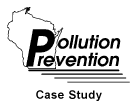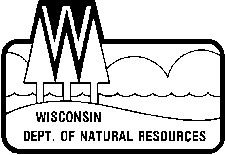
Snap-on Tools
Recycling a Rinsewater Stream Using
Ultrafiltration and Ion Exchange
Snap-on uses an electrocoating paint line with water based coatings. Snap-on Tools uses ultrafiltration to recover process paint from the rinse tanks' effluent. The ultrafiltration process produces concentrated paint for return to the paint bath, and permeate which is recycled to the rinse baths.
The permeate composition is 97% water with 2-3% ethylene glycol monobutyl ether (butyl cellusolve) and a contaminant isopropyl amine present in amounts less than 1%. The recycle loop to the rinse could not be totally closed because the contaminant isopropyl amine would build up in the system and ruin the rinse bath.
To prevent the build up of isopropyl amine, a purge stream was split from the recycle stream and drained to the Publicly-Owned Treatment Works (POTW). In 1989, Snap-on reported sewering over 190,000 pounds of the butyl cellusolve. The local POTW had no difficulty handling the extra strength wastewater loading.
A two stage ion exchange resin system was installed to remove the isopropyl amine from the purge stream. The permeate from the ion exchange system (water and butyl cellusolve) can now returned to the rinse baths. The isopropyl amine that is trapped by the resin is stripped during the regeneration of the resin and is sewered.
The ion exchange system has been very successful in removing the isopropyl amine. Only 3,500 pounds per year of butyl celluslove must now be purged and discharged to the POTW. Snap-on Tools now saves $54,900/year due to butyl cellusolve recovery, and at least $18,000/year on sewer fees.
Feedstock
Butyl cellusolve in rinse water
Waste
Butyl cellusolve in wastewater - 190,000 lbs (1989)
Disposal
Discharged to POTW
Pollution Prevention Approach
Feedstock
Butyl cellusolve in rinse water
Waste
$150,000 (1989)
Operating/Maintenance Cost
Not available
Payback Period
Payback of 2 years based on total savings of $72,900/year from butyl cellusolve recovery
($54,900/yr.) and sewer fee savings ($18,000/yr.)
Kenosha, WI 53141-1410
Environmental Engineering and Industrial Hygiene
Phone: 414/656-5200
Solid and Hazardous Waste Education Center
Milwaukee area: 414/475-2845
Remainder of state: 608/262-0385
Pollution Prevention
Clearinghouse
Wisconsin Department of Natural Resources
Hazardous Waste Minimization Program
608/264-8852, 608/267-9523 or 608/267-3763
 |
PUBL-SW-166 95 |